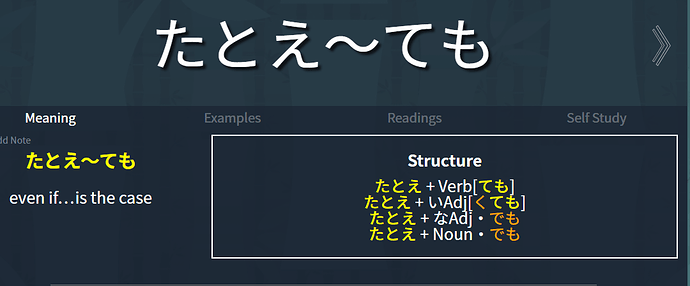I meant a page for going into detail of how the grammar works, similar to Maggie Sensei, imabi, and so on. But just for this grammar point (and potentially other complicated ones in the future). But having a second grammar point for はか~ない sounds good too if that’s what you’re getting at.
Looking at this grammar point, I also noticed a bug with the Show English button in the Examples section. Clicking Show English shows both the English translation and the extra information in orange. But clicking the English translation only hides the English, and likewise clicking the extra information only hides that. I think it should hide both just like the button shows both. [CC: @Pushindawood]





